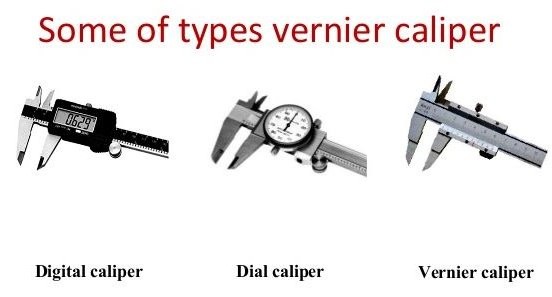
Types of Calipers : Why Ignoring Them will Cost You Time and Money
Calipers have been around for a long time due to the fact that they are extremely versatile and useful tools which are used for making a wide range of measurements. Micrometers are more accurate but they have a limited range whereas a caliper can measure anywhere between 2 inches to 4 feet with accuracy and quality assurance. Measurements with the help of calipers are done by closing the jaws over the piece to be measured, while the internal measurements are made by opening up the inside of the diameter contacts.
3 Types of Calipers
1. Vernier Caliper
The Vernier caliper is the original design and still the toughest one. This caliper is graduated a lot like a micrometer. It needs the alignment of an etched scale on the Vernier plate with an equally spaced scale running the length of the tool’s handle. You need skill to align the tools and the interpretation of the reading is necessary to achieve the measurement tool’s stated accuracy.
2. Dial Caliper
The Dial caliper is a second generation caliper which is similar to the Vernier Caliper. The difference is that this caliper has a dial indicator which is fixed to the movable jaw and engaged with a toothed rack on the body of the unit. The dial which is normally balanced can be graduated in either inch or metric units.
This is a dual purpose tool for making either direct or comparative measurements. To make a comparison, you must first measure the reference dimension and set the dial indicator to zero then measure the compared dimension. The indicator will show how much the compared dimension varies from the original.
Dial calipers have one more unique feature which is their jaws. These jaws slide past each other to allow contact points or depth rod extensions to fit into narrow openings for small ID measurements.
3. Digital Caliper
The digital caliper is the latest caliper to make its way into the market and has a lot of electric features which makes it pretty easy to use but has a higher price tag. The digital caliper has features that include easy switching between inch and metric readouts as well as bigger display screens. There is a retention of the zero setting even when the caliper is turned off. The digital caliper is extremely durable as there are no moving parts in the readout and is designed to withstand some of the toughest manufacturing conditions.
3 Concerns for Calipers
1. Care and Respect
Like any tool, your caliper should be treated properly with care and respect. Do not use your caliper for something it was never designed to do. Make sure to wipe it clean after use and gently place it back in its case. You have to be particularly wary of dirt with dial calipers as any accumulation of dirt can throw the accuracy off which will end up damaging your indicator. You should store your caliper in its proper case. If you know that your caliper is going to be sitting idle for a while then it is best to coat the jaws with oil to prevent them from rusting up.
2. Wear and Calibration
Make sure to inspect your caliper often for wear and tear such as burrs, scratches on the jaws. The easiest and simplest way to do this is by running a master disc along the jaws. Like most measurement tools, a caliper is calibrated at least once a year and more often according to its use.
3. Proper Feel
Even though a caliper is a pretty versatile tool it is not necessarily the most accurate. A certain amount of skill is needed for positioning the caliper and interpreting its measurement result. As you develop your ‘feel’ for your tool, your measurements become a lot more consistent.
Even though the digital caliper might take some of the guesswork out of reading the measured value, it still requires skill to operate it properly.
The ‘rule of ten’ states that a measurement tool should have ten times more resolution than the tolerance of the dimension. Calipers typically read in 0.001’ units.
The humble caliper is a surprisingly versatile tool for a wide range of general-purpose distance measurements. With a little practice, you can make a quick measurement or comparison in seconds. If you have equipment calibration in mind, contact our professionals at RS Calibration for calibration services today!